Showing Spotlights 25 - 32 of 77 in category All (newest first):
 Quantum computation using artificial-atoms can be sensitively controlled by external electromagnetic fields. These fields and the self-fields attributable to the coupled artificial-atoms influence the amount of quantum correlation in the system. However, control elements that can operate without complete destruction of the entanglement of the quantum-bits are difficult to engineer. In new work, scientists have investigate the possibility of using closely spaced-linear arrays of metallic-elliptical discs as whispering gallery waveguides to control artificial atoms.
Quantum computation using artificial-atoms can be sensitively controlled by external electromagnetic fields. These fields and the self-fields attributable to the coupled artificial-atoms influence the amount of quantum correlation in the system. However, control elements that can operate without complete destruction of the entanglement of the quantum-bits are difficult to engineer. In new work, scientists have investigate the possibility of using closely spaced-linear arrays of metallic-elliptical discs as whispering gallery waveguides to control artificial atoms.
May 10th, 2016
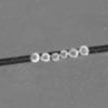 Researchers engineered synthetic nanomotors that self-propel and autonomously detect surface cracks in electronic devices and rapidly restore the conductive pathway. These nanomotors were inspired by the chemotaxis of neutrophils toward inflammation sites and the aggregation of platelets at the collagen fibers of a wound to stop bleeding. The catalytic nanomotors are composed of conductive gold/platinum spherical Janus particles that self-propel efficiently in the presence of hydrogen peroxide fuel.
Researchers engineered synthetic nanomotors that self-propel and autonomously detect surface cracks in electronic devices and rapidly restore the conductive pathway. These nanomotors were inspired by the chemotaxis of neutrophils toward inflammation sites and the aggregation of platelets at the collagen fibers of a wound to stop bleeding. The catalytic nanomotors are composed of conductive gold/platinum spherical Janus particles that self-propel efficiently in the presence of hydrogen peroxide fuel.
Sep 22nd, 2015
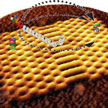 In new work, researchers have utilized diffusion as an effective transport mechanism for DNA nanotechnology. These findings contribute a new aspect to be considered for the design of future DNA motors, molecular machines, and nanorobots as they provide a simple way to transport molecules over distances of potentially several 100 nm; which is much faster than when using conventional DNA walkers or motors, which make many small and slow steps.
In new work, researchers have utilized diffusion as an effective transport mechanism for DNA nanotechnology. These findings contribute a new aspect to be considered for the design of future DNA motors, molecular machines, and nanorobots as they provide a simple way to transport molecules over distances of potentially several 100 nm; which is much faster than when using conventional DNA walkers or motors, which make many small and slow steps.
Mar 19th, 2015
 New findings address the challenges of operating synthetic motors in living organisms through the use of biocompatible motors that are powered by body fluid (acidic stomach environment). As the zinc body of the motor is dissolved by the acid fuel, the motors are self-destroyed, leaving no harmful chemicals behind. The study reports on the distribution, retention, cargo delivery and toxicity profile of zinc/polymer-based microrockets in a mouse stomach.
New findings address the challenges of operating synthetic motors in living organisms through the use of biocompatible motors that are powered by body fluid (acidic stomach environment). As the zinc body of the motor is dissolved by the acid fuel, the motors are self-destroyed, leaving no harmful chemicals behind. The study reports on the distribution, retention, cargo delivery and toxicity profile of zinc/polymer-based microrockets in a mouse stomach.
Jan 15th, 2015
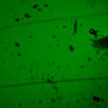 Researchers have demonstrated an active glucose-responsive self-powered fluidic pump based on transesterification reaction of acyclic diol boronate with glucose. The scientific principle of the project is to use well-known glucose/boronate chemistry to design a self-powered micropump device. Instead of synthesizing some new molecules with glucose/boronate reaction, a miniature pump utilizes the energy of this chemical reaction and pumps drugs when glucose levels are high.
Researchers have demonstrated an active glucose-responsive self-powered fluidic pump based on transesterification reaction of acyclic diol boronate with glucose. The scientific principle of the project is to use well-known glucose/boronate chemistry to design a self-powered micropump device. Instead of synthesizing some new molecules with glucose/boronate reaction, a miniature pump utilizes the energy of this chemical reaction and pumps drugs when glucose levels are high.
Aug 19th, 2014
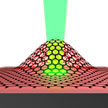 Most nanomotors designs are powered by quantum or, in most cases, catalytic chemical processes, the nanoscale equivalent of conventional internal heat engines that are so prevalent in our daily life has been missing. Researchers have now suggested a new type of ultrathin graphene engine which mimics an internal combustion engine system. This graphene engine consists of only a few parts - functionalized graphene, laser light, and substrate, which would make it simple to work with.
Most nanomotors designs are powered by quantum or, in most cases, catalytic chemical processes, the nanoscale equivalent of conventional internal heat engines that are so prevalent in our daily life has been missing. Researchers have now suggested a new type of ultrathin graphene engine which mimics an internal combustion engine system. This graphene engine consists of only a few parts - functionalized graphene, laser light, and substrate, which would make it simple to work with.
May 16th, 2014
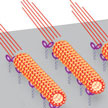 Over the past few years, researchers have demonstrated that microtubules driven by kinesin make flexible, responsive and effective molecular shuttles for nanotransport applications. In order to fully control microtubules driven by kinesin it has to be possible to switch them on, switch them off, and regulate the speed and direction of their movements - achievements that until now researchers have't fully attained yet. Now, though, it has become possible, for the first time, to achieve complete control over on/off switching of the movement of a nanomachine.
Over the past few years, researchers have demonstrated that microtubules driven by kinesin make flexible, responsive and effective molecular shuttles for nanotransport applications. In order to fully control microtubules driven by kinesin it has to be possible to switch them on, switch them off, and regulate the speed and direction of their movements - achievements that until now researchers have't fully attained yet. Now, though, it has become possible, for the first time, to achieve complete control over on/off switching of the movement of a nanomachine.
Apr 14th, 2014
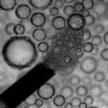 The construction of artificial micro- and nanomotors is a high priority in the nanotechnology field owing to their great potential for diverse potential applications, ranging from targeted drug delivery, on-chip diagnostics and biosensing, or pumping of fluids at the microscale to environmental remediation. In new work, researchers have now reported the first example of micromotors for the active degradation of organic pollutants in solution. The novelty of this work lies in the synergy between internal and external functionality of the micromotors.
The construction of artificial micro- and nanomotors is a high priority in the nanotechnology field owing to their great potential for diverse potential applications, ranging from targeted drug delivery, on-chip diagnostics and biosensing, or pumping of fluids at the microscale to environmental remediation. In new work, researchers have now reported the first example of micromotors for the active degradation of organic pollutants in solution. The novelty of this work lies in the synergy between internal and external functionality of the micromotors.
Dec 2nd, 2013
 Quantum computation using artificial-atoms can be sensitively controlled by external electromagnetic fields. These fields and the self-fields attributable to the coupled artificial-atoms influence the amount of quantum correlation in the system. However, control elements that can operate without complete destruction of the entanglement of the quantum-bits are difficult to engineer. In new work, scientists have investigate the possibility of using closely spaced-linear arrays of metallic-elliptical discs as whispering gallery waveguides to control artificial atoms.
Quantum computation using artificial-atoms can be sensitively controlled by external electromagnetic fields. These fields and the self-fields attributable to the coupled artificial-atoms influence the amount of quantum correlation in the system. However, control elements that can operate without complete destruction of the entanglement of the quantum-bits are difficult to engineer. In new work, scientists have investigate the possibility of using closely spaced-linear arrays of metallic-elliptical discs as whispering gallery waveguides to control artificial atoms.
 Subscribe to our Nanotechnology Spotlight feed
Subscribe to our Nanotechnology Spotlight feed





